Here’s everything about data scientists using one big monitor and/or two small monitors:
If you have the space for it, this can be a highly effective setup that gives you a lot of freedom to organize information and digital tools in ways that improve your efficiency and efficacy.
Alternatively, you could use only two monitors, three monitors of the same size, or one big monitor.
All are viable.
So if you want to learn all about data scientists working with one big and/or two smaller monitors, then you’re in the right place.
Keep reading!
- Monitor Light Blinking: How to Fix?
- Monitor USB Ports: Purpose?
- 120 Hz vs. 144 Hz Monitors: Difference?
- All-in-One Computer as Monitor: How To?
- Computer Screen Colors: Easiest on the Eyes?
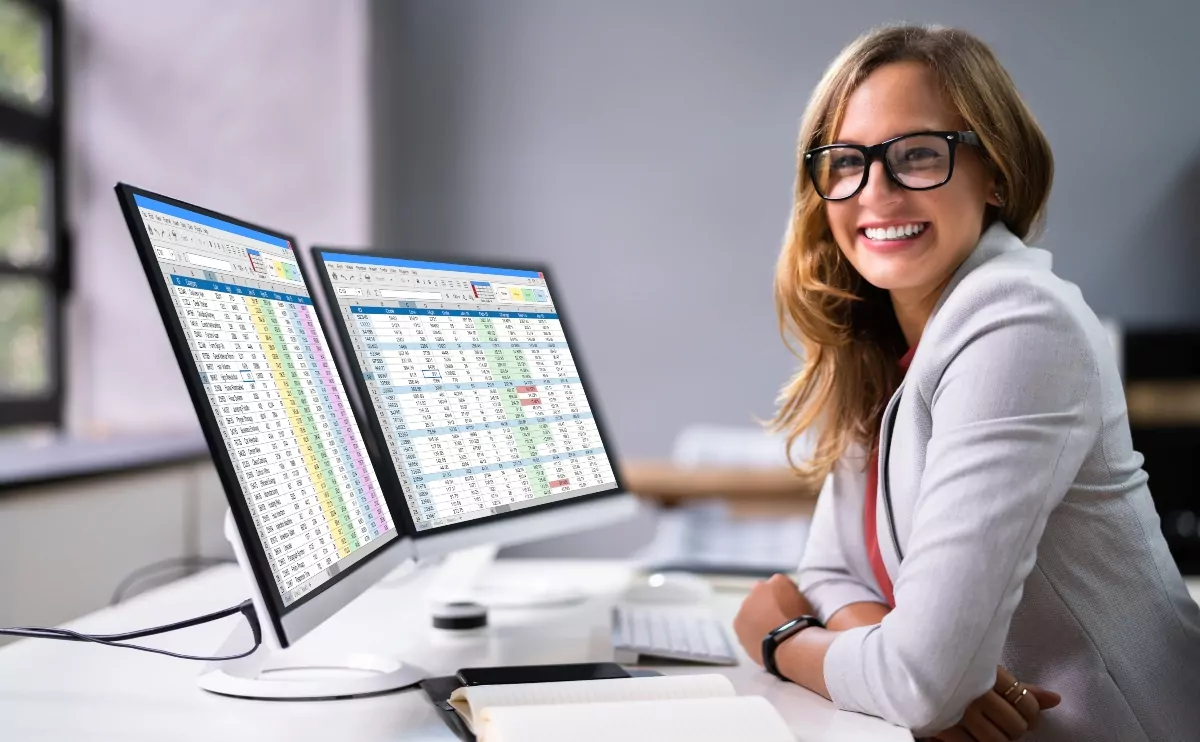
Why Might Data Scientists Need More Monitors?
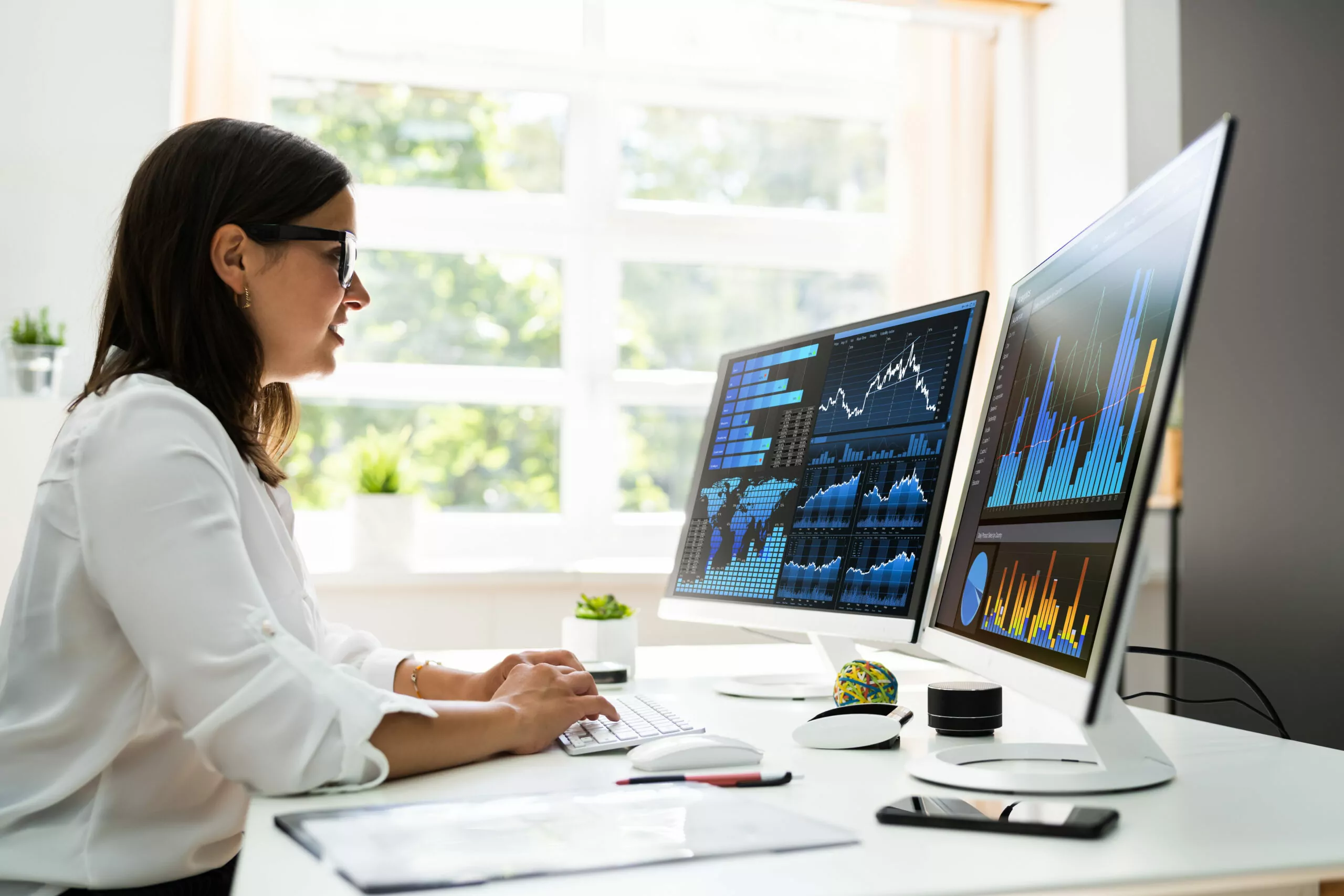
What is this all about?
In general, you can connect multiple monitors to a single computer, and when you do, you have a few options for how it will work.
Most commonly, people like to set up multiple monitors so that they have independent displays.
Basically, this means that you can have different information on each monitor.
As an example, you could have Netflix running on one monitor in full screen.
On your second monitor, you can open up a web browser to look up the cast of the show (or movie) every time you can’t figure out why you recognize a face.
At the same time, you can have a chat window open on the third monitor so that you can constantly send the random thoughts that occur while watching the show to one of your friends.
That’s a very casual example, but it shows how multiple monitors can open up the ability to multitask on a computer without the need to shrink your digital workspaces down to a point where you can’t see what you’re doing.
Now, let’s bring data scientists into this.
In data science, it’s common to move information from one application to another on a regular basis.
While doing this, it’s often easy to have multiple windows open.
Add in that the data scientist might be running powerful, complicated software while running into the need to look up specific information, and there are good reasons to want multiple monitors in a workspace.
With all of that covered, I’ll talk about the pros and cons of this specific setup, and I’ll inevitably bring up some viable alternatives along the way.
What Are the Advantages of One Big Monitor and Two Smaller Monitors for Data Scientists? (4 Benefits)
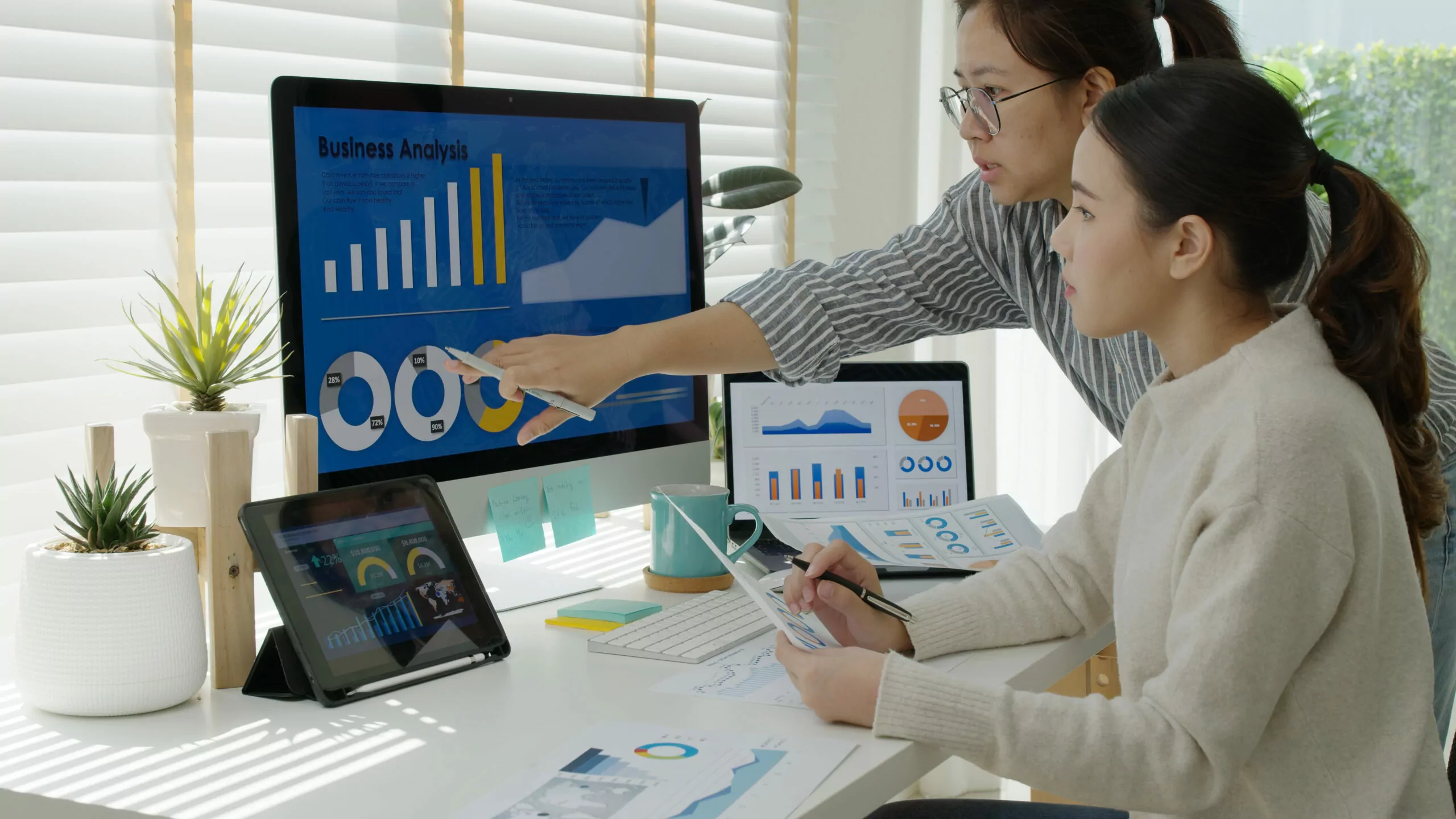
The truth is that there are some good reasons to use this setup.
When you have one big monitor and two additional, smaller monitors, and can seriously impact how you work, and typically for the better.
I’ll show you some specific aspects of how it works, but this setup is definitely worth considering.
A little later, I’ll discuss alternatives and the specific ways that they might be better.
#1 More Visual Real Estate
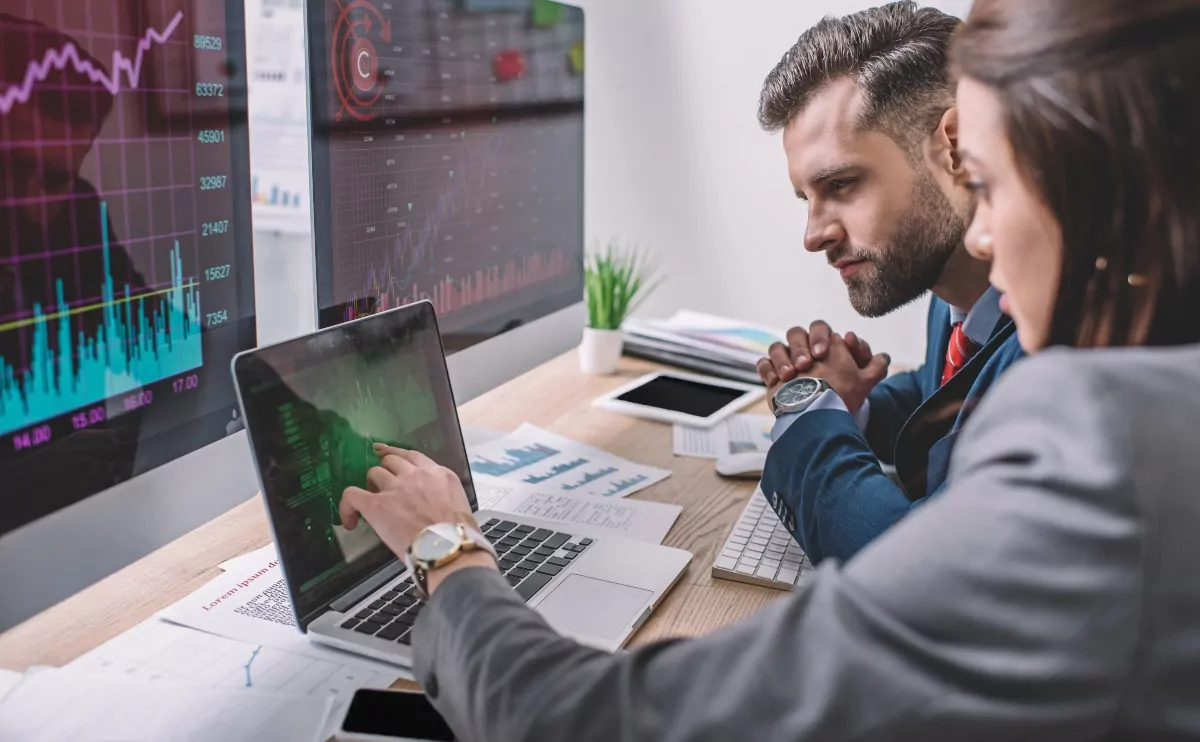
This is the primary reason to get multiple monitors.
Each monitor you add to a setup increases the total number of square inches you have in your combined visual display.
In other words, you can see more things at a glance.
As I already mentioned, data science involves using complex software, moving data from one program to another, and making many comparisons.
The extra visual real estate gives you more freedom in how you display the various things you are comparing, and it makes it easier to see important things and make important connections at a glance.
Overall, extra visual real estate gives you more options, and when used well, those options can help you do the job more effectively.
#2 Extra Organization
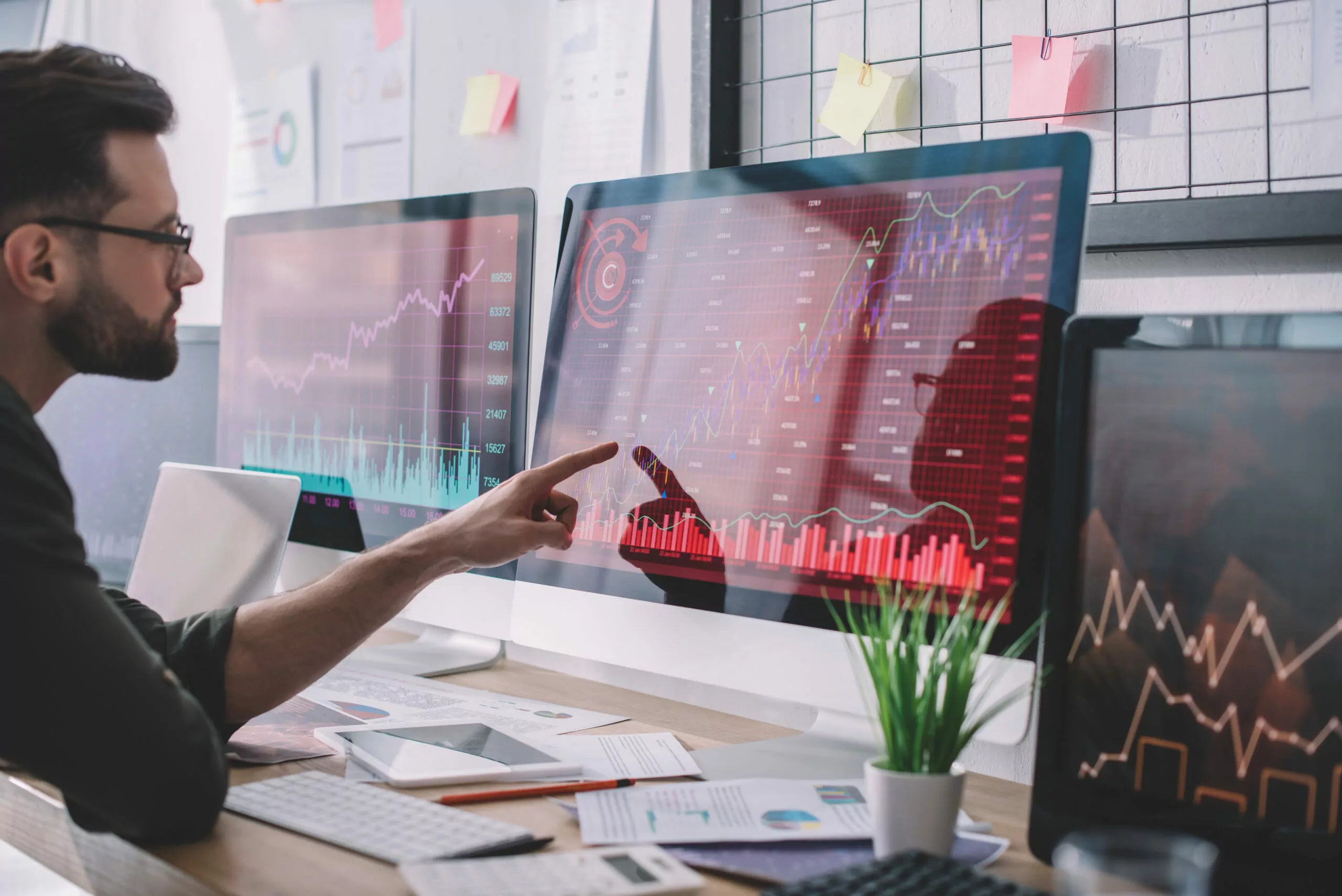
One of the specific advantages of having more screen real estate is that you have room to display more sources of information at a time.
If you’ve ever used a computer before, then you might have noticed how you can have multiple windows open at a time.
If you try, you can even arrange those windows to see them displayed simultaneously.
With extra screens, you have the ability to keep even more windows visible at any given moment.
When you combine that with screens of varying sizes, you get some interesting new ways to organize the information that is displayed on the screens.
As an example, you can put the largest monitor in the middle of your arrangement, and you can make the most important window the largest window on that central monitor.
Since it’s bigger, it’s easier to see and work with.
Meanwhile, lesser windows that you still need to view frequently can be relegated to the smaller screens.
There’s a natural progression to organizing the information that you need from the computer, and the varying screen sizes accentuate that.
#3 Efficiency

What is the point of all of these options for organizing your data science work setup?
The organization options should empower you to optimize your workflow on the computer.
With three monitors and your accentuated organization from their varying sizes, you can really steer into a system that allows you to work faster without losing any accuracy or reliability.
It’s a plain efficiency upgrade, which is usually a good thing for most professional occupations. Data science is certainly not an exception to this rule.
#4 Screen Sizing
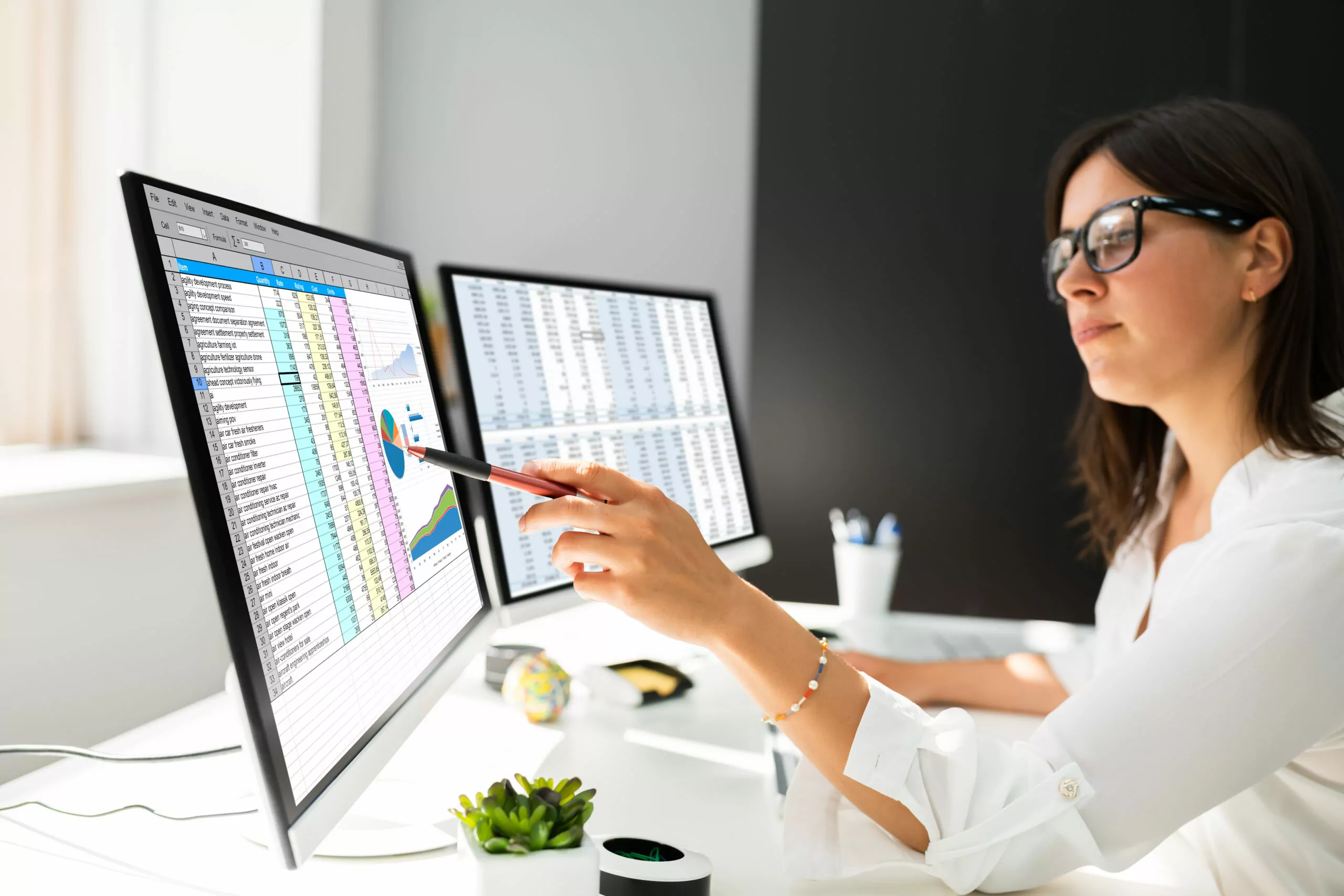
The thing is, you can increase your screen real estate without using multiple monitors.
Instead, you can get one jumbo monitor, and that comes with some advantages that will be discussed in later sections.
Even with that option, there’s a specific advantage to using multiple smaller monitors instead, and that has to do with adjusting the size of windows and other items on the screen.
Let’s consider the most extreme example.
Let’s say you’re working with a spreadsheet.
You’re trying to organize information on that spreadsheet so you can import it into another program later for some advanced analysis.
Since the spreadsheet is your primary concern, you might want to do the fullscreen option for that spreadsheet.
It will take up the whole screen, and the advantage of this is that you can’t accidentally click away from the spreadsheet to hide it.
If you do this with a jumbo monitor, the spreadsheet will fill your whole, single screen.
It will be distorted because the monitor is so big, and you won’t be able to use other windows at the same time.
Meanwhile, when you have three monitors, you can use the fullscreen option with the spreadsheet on one monitor.
You will still be able to view information on the other two monitors at a glance.
That’s the most extreme example, but the fact is that multiple monitors give you more viable options for organizing the various windows and such on the monitors.
A single, jumbo monitor is often harder to organize quite so effectively, and it comes down to distortion effects that happen on larger monitors.
What Are the Disadvantages of One Big Monitor and Two Smaller Monitors for Data Scientists? (3 Drawbacks)

Those advantages probably sound compelling, but despite everything I listed, there are plenty of data scientists in the world who aren’t using this setup.
That’s because it comes with some cons too.
In general, there are a few alternative options that often work better, and I’ll be discussing those as I go through the disadvantages of the one-big two-small setup.
First up, you can just use two monitors.
That’s clearly cheaper and easier to arrange at the cost of some of that precious monitor real estate.
Second, you can use three monitors that are all the same size.
You’ll see some specific pros and cons that come up in this case.
Third, you can use a single monitor.
If you really want more screen space, you can get a large single monitor.
You’ll see that this option comes with some serious benefits.
All things considered, there’s not a universal best setup.
You should go with what fits your space, how you work, and your budget.
But, I’ll give you some more options to consider before we’re done here.
#1 Desk Space

This is pretty easy to understand.
Three monitors will eat up more organizational space on your desk than just one monitor.
You have three stands for your monitors, which are harder to fit on the desk than one centered stand—even for a jumbo monitor.
You also have three sets of cables that you have to run all over the place.
Overall, getting everything to fit nicely on a single desk isn’t always easy, and for a smaller workspace, three monitors aren’t viable.
Now, using one large monitor and two smaller monitors might make it possible to cram everything onto a single desk, but in many cases, even that concession won’t be sufficient.
If you can’t fit three monitors, then it’s not a viable option.
Despite that, you might be able to fit a single, large monitor that gives you a lot more screen real estate than what you are currently using.
#2 Ergonomics

It’s important to have good posture and ergonomics when you work on a computer all day.
If not, you can create too much stress and strain on different parts of your body, and you can even develop chronic injuries.
To minimize strain and risk of injury, there are a few universal tips that help.
First, you want to be able to sit up straight and look at eye level at all of your monitors.
Second, you want to avoid bending your neck in order to use your equipment.
There are other tips too, but they don’t really apply to this particular comparison.
Here’s the deal.
When you have multiple monitors of differing sizes, it’s a lot more difficult to arrange them ergonomically.
Using multiple monitors of the same size is easier, and using one monitor is even easier.
#3 Cost

Adding monitors to your setup adds to the total cost of your setup.
There’s no way around that, and running more than two monitors can incur additional costs that are easy to overlook.
On average, personal computers can support one to two monitors as they are.
It’s very normal.
Unfortunately, support for three or more monitors is less normal (although not entirely uncommon).
Now, you can add hardware or make upgrades so that just about any computer can run three monitors, but if you have to get extra hardware to make that work, then you’re adding even more to the overall cost of the setup.
On top of that, ergonomically arranging your monitors usually costs money too.
You will often need monitor stands or arms to suspend them all at the right height, and you’re getting attachments for each monitor.
You might also have to purchase extra cables to attach them all to your computer, and so on.
Compare this to a single, large monitor, and there’s a chance to save money.
The one jumbo monitor will likely be more expensive than any one monitor in the three-device setup, but the overall cost can definitely be more affordable with a single large monitor (depending on what specific device you choose).

